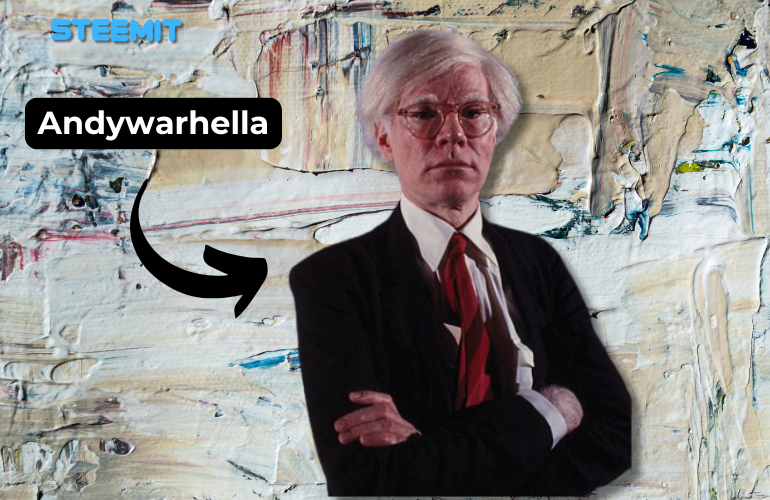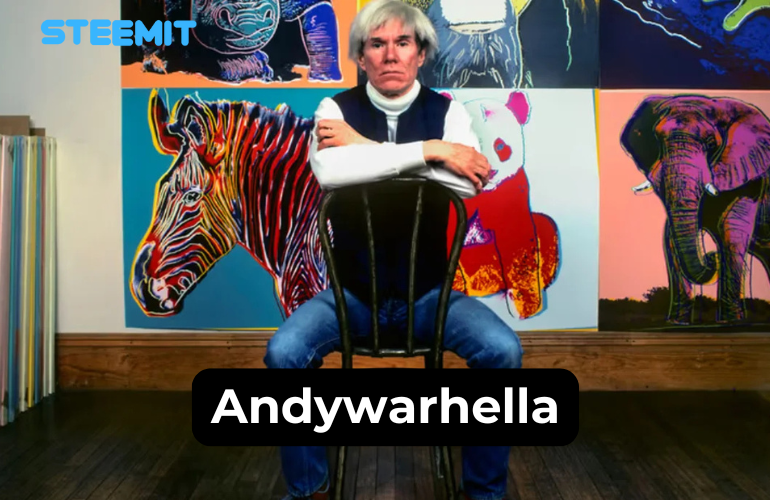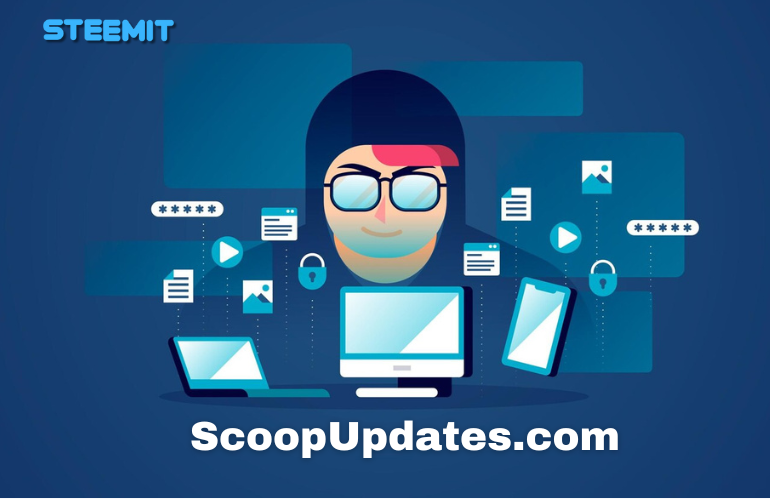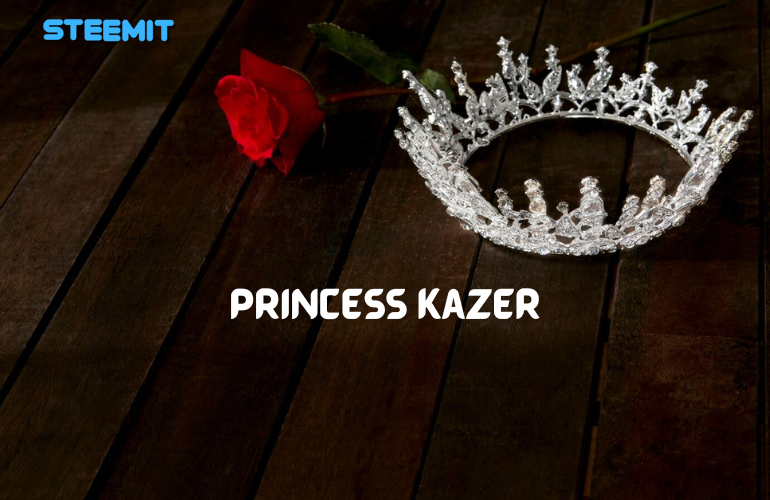Defining Andywarhella: Origins and Warholian Roots
Who Is Andywarhella?
Andywarhella emerges as a contemporary artistic movement that reimagines Andy Warhol’s iconic philosophies for the digital age. Rooted in the fusion of pop art, technology, and social commentary, Andywarhella critiques and celebrates modern phenomena like influencer culture, digital identity, and the commodification of art. It transforms Warhol’s fascination with mass production and celebrity into interactive, tech-driven expressions—think viral selfies as modern-day Campbell’s Soup Cans or NFTs as the silk screens of the 21st century.
Andy Warhol’s Enduring Influence
To understand Andywarhella, one must first revisit Warhol’s legacy. The pop art pioneer revolutionized art in the 1960s by blurring the lines between high art and consumer culture. His factory-produced works, such as Marilyn Diptych (1962) and Brillo Boxes (1964), challenged notions of originality, while his quip, “In the future, everyone will be world-famous for 15 minutes,” foreshadowed today’s social media-driven fame. Warhol’s obsession with repetition, celebrity, and media saturation laid the groundwork for Andywarhella’s exploration of digital reproducibility and online persona curation.
From Factory to Feed: Warhol’s Ideas Reborn
Andywarhella updates Warhol’s themes through the lens of modern technology. Where Warhol used silk-screen printing to mass-produce art, Andywarhella leverages algorithms and social platforms to democratize creativity. The movement interprets Warhol’s “15 minutes of fame” as a lived reality in the age of TikTok stardom and Instagram aesthetics. For instance, the Art of the Selfie—a cornerstone of Andywarhella—mirrors Warhol’s portraiture but shifts the power of representation from the artist to the individual, turning self-documentation into a cultural artifact.
Cultural Bridges: Consumerism, Identity, and Digital Fluidity
Warhol’s commentary on consumerism evolves in Andywarhella to address personal branding and digital capitalism. The movement critiques how identity itself becomes a commodity—a theme Warhol hinted at with his celebrity portraits—but expands it to dissect influencer culture, where personas are meticulously crafted for monetization. Simultaneously, Andywarhella embraces Warhol’s irreverence, using memes and satirical digital collages to question authenticity in an era of filters and curated feeds.
Aesthetic Innovation in the Digital Era
Blending Pop Art Aesthetics with Digital Fluidity
Andywarhella’s aesthetic is a vibrant collision of Warholian pop art sensibilities and cutting-edge digital experimentation. Like Warhol’s iconic use of silk-screening and repetition, the movement embraces tools such as AI-generated imagery, augmented reality (AR), and 3D modeling to reimagine everyday objects, faces, and cultural symbols. Neon-bright palettes, glitch effects, and hyper-saturated visuals pay homage to pop art’s boldness while subverting it with pixelated distortions and algorithmic randomness. For instance, Andywarhella transforms the selfie—a mundane act of self-documentation—into a Warholian statement by overlaying it with Warhol-esque color blocks, retro filters, or fractal patterns, turning the ephemeral into the iconic.
Technology as a Creative Catalyst
Central to Andywarhella’s innovation is its reliance on digital tools to democratize artistic expression. Where Warhol’s Factory required physical silkscreens and studio space, Andywarhella thrives on apps like Photoshop, Procreate, and blockchain-based platforms. Social media itself becomes a canvas: Instagram grids mimic Warhol’s grid portraits, while TikTok’s short-form videos reinterpret his fascination with repetition through viral trends. The movement also harnesses generative AI to create infinite variations of a single image, echoing Warhol’s mass-production ethos but in a realm where code replaces factory labor. This shift not only accelerates creativity but also challenges traditional notions of authorship—what happens when an algorithm co-creates art?
The Selfie as Modern Portraiture
Warhol’s obsession with celebrity portraiture finds new life in Andywarhella’s celebration of the selfie. By framing selfies as digital-age equivalents of Warhol’s Marilyn or Elvis series, the movement critiques and elevates narcissism as a cultural force. Filters and editing apps act as modern-day silk screens, allowing users to stylize their identities with Warholian flair. Projects like #DigitalFactory—a crowdsourced Instagram gallery where users submit AI-remixed selfies—highlight how technology turns individual vanity into collective art, blurring the line between creator and consumer.
Interactivity and Immersive Experiences
Andywarhella pushes beyond static art by embracing immersive technologies. AR installations, for example, overlay Warhol-inspired animations onto physical spaces, inviting viewers to “step into” a living pop art collage. Virtual galleries in platforms like Decentraland host exhibitions where avatars interact with digital Brillo Boxes or NFT-based Campbell’s Soup cans, merging nostalgia with futurism. These experiences democratize access to art while questioning its permanence: unlike Warhol’s physical prints, a glitch or server crash could erase a digital masterpiece.
Critiquing the Digital Landscape
Beneath its playful surface, Andywarhella’s aesthetic carries a sharp critique of digital culture. The movement’s overprocessed visuals—think AI-generated faces with uncanny, melting features—mirror anxieties about authenticity in an age of deepfakes and curated personas. Similarly, its reliance on disposable digital mediums (e.g., NFTs stored on energy-intensive blockchains) subtly critiques the environmental and ethical costs of tech-driven art. Yet, like Warhol, Andywarhella balances irony with celebration, using absurdity to both mock and marvel at the chaos of the internet.
Cultural Impact: Social Media, Identity, and Consumerism
The Rise of the Influencer as the New Pop Icon
Andywarhella positions social media influencers as the 21st-century heirs to Warhol’s superstars. Much like Warhol’s Factory churned out icons like Edie Sedgwick, platforms like Instagram and TikTok manufacture micro-celebrities whose personas are curated for mass consumption. Andywarhella critiques this shift by replicating influencer aesthetics—pristine flat lays, aspirational lifestyles, and viral challenges—in satirical digital collages that exaggerate their artifice. For instance, a series titled #ContentFactory mimics Warhol’s assembly-line approach, replacing Campbell’s Soup cans with endless grids of nearly identical influencer selfies, underscoring the homogenization of digital fame.

Personal Branding: Crafting Identity in the Digital Marketplace
Warhol’s observation that “you’re always a little trapped by your own image” takes on new urgency in Andywarhella’s exploration of personal branding. The movement dissects how individuals commodify their identities online, turning hobbies, politics, and even vulnerabilities into marketable content. Projects like Profile as Portrait reimagine LinkedIn headshots or Instagram bios as Warholian silk screens, layered with hashtags, follower counts, and sponsorship badges. These works highlight the paradox of digital self-expression: the more “authentic” one aims to appear, the more one conforms to algorithmic trends.
Consumerism 2.0: From Soup Cans to Social Commerce
Warhol’s fascination with consumer culture—epitomized by his Brillo Boxes and Coca-Cola paintings—finds a dystopian update in Andywarhella’s critique of social commerce. The movement examines how platforms like TikTok Shop and Instagram’s “swipe up” culture blur the lines between art, advertisement, and identity. A digital series titled Haul Culture Diptych juxtaposes unboxing videos with Warhol’s Marilyn, framing hauls of fast fashion or beauty products as modern relics of consumer worship. Meanwhile, Andywarhella’s collaborations with eco-conscious brands parody this cycle, using QR codes that link to critiques of overconsumption hidden behind “buy now” prompts.
The Duality of Fame: Empowerment and Exploitation
Andywarhella amplifies Warhol’s ambivalence toward fame, celebrating its democratization while critiquing its costs. The movement’s 15 Minutes of FYP project repurposes TikTok’s “For You Page” to showcase fleeting viral moments—dance trends, political hot takes, and cancel culture callouts—as digital mosaics that evaporate after 24 hours. This mirrors the transient nature of online relevance, questioning who benefits from this system. Is the teenager gaining followers through a viral meme the new “self-made artist,” or a pawn in a profit-driven attention economy?
Satire and Subversion: Andywarhella’s Critical Lens
Not content to merely document trends, Andywarhella weaponizes irony to challenge toxic aspects of digital culture. A viral campaign dubbed Filtered Realities uses AI to generate grotesquely “perfected” selfies—poreless skin, exaggerated features, and surreal backgrounds—to mock beauty standards and the pursuit of algorithmic validation. Similarly, NFTs of Nothing auctions blockchain tokens linked to blank JPEGs, riffing on Warhol’s White Brillo Boxes to critique the absurdity of digital scarcity in an age of infinite replication.
Art as Commodity: Commercialization and Criticisms
NFTs and the Digital Silk Screen: Reinventing Ownership
Andywarhella’s embrace of NFTs (Non-Fungible Tokens) reimagines Warhol’s fascination with mass production for the blockchain era. Much like Warhol’s silk-screened multiples, which challenged the exclusivity of “original” art, Andywarhella’s NFT collections—such as Digital Soup Cans and 15-Minute Fame Tokens—tokenize digital art as tradable assets. These works often riff on Warholian motifs: a pixelated Marilyn Monroe auctioned on Ethereum, or a glitch-art Campbell’s Soup Can that morphs with each resale. By encoding scarcity into infinitely replicable digital files, Andywarhella critiques the paradox of value in the internet age, asking: Is art worth more because it’s unique, or because everyone recognizes its brand?
The Commercialization Paradox: Accessibility vs. Exclusivity
While Warhol democratized art through prints priced for the masses, Andywarhella’s NFT drops—some selling for six figures—raise questions about elitism. Projects like FOMO Factory, a series of algorithmically generated avatars, parody crypto-art hype by offering “exclusive” digital collectibles that satirize their own absurdity (e.g., a NFT of a virtual banana taped to a pixel wall). Yet critics argue this mirrors the very systems Warhol mocked, gatekeeping art behind tech-savvy buyers and volatile crypto markets. The movement’s response? Initiatives like Open Access Editions, where limited free NFTs unlock AR experiences, attempt to balance commercial success with Warhol’s ethos of art for all.
Environmental and Ethical Controversies
Blockchain’s environmental toll casts a shadow over Andywarhella’s digital utopia. The energy-intensive process of minting NFTs on platforms like Ethereum clashes with the movement’s occasional nods to sustainability (e.g., Eco-Glitch series highlighting climate data through melting digital landscapes). Detractors liken it to Warhol’s factory waste—a byproduct of mass production. In response, Andywarhella increasingly partners with eco-conscious blockchains (Tezos, Solana) and offsets carbon footprints, though skeptics question whether this absolves the broader ecological impact of crypto-art.
Artistic Integrity in the Age of Tokenization
Warhol blurred art and commerce by designing album covers and ads, but Andywarhella faces accusations of “selling out” through branded collaborations. A viral campaign with a fast-fashion giant, where users designed NFT outfits for digital influencers, sparked backlash for glamorizing overconsumption. Supporters, however, argue such projects embody Warhol’s subversive humor—imagine his Brillo Boxes critiquing consumerism while sitting in a grocery store. The line between critique and complicity remains deliberately ambiguous, mirroring Warhol’s own slippery relationship with capitalism.
The Democratization Dilemma
Can art stay rebellious when algorithmically tailored to sell? Andywarhella’s AI-driven tools, which let users “Warholize” selfies into NFT-ready art, empower amateur creators but also feed platforms that profit from user data. This tension echoes Warhol’s assembly-line production: Does democratizing art dilute its potency, or expand its cultural reach? Projects like Viral Public Domain—where AI remixes copyright-free Warhol works into CC0 NFTs—attempt to reclaim open-access ideals in a profit-driven landscape.
Redefining Art Norms: Community, Collaboration, and Accessibility
Breaking Traditional Barriers: Community as Curator
Andywarhella dismantles the elitist gatekeeping of traditional art institutions by turning audiences into active participants. Inspired by Warhol’s Factory—a hub for artists, misfits, and celebrities—the movement fosters decentralized, digital “factories” where anyone can contribute to collective projects. Platforms like The Open Canvas, a crowdsourced digital mural, allow users to remix Warholian motifs (think neon soup cans or pixelated Marilyns) into ever-evolving artworks. These collaborations democratize curation, challenging the notion that art’s value hinges on expert validation. A viral TikTok campaign, #ArtByAll, even crowdsourced self-portraits from thousands of users, algorithmically stitching them into a sprawling digital mosaic exhibited in virtual galleries.
Collaborative Creation: The Digital Factory Reimagined
Warhol’s collaborative ethos is reborn in Andywarhella’s global, internet-driven networks. Projects like The Meme Machine invite artists and non-artists alike to riff on pop culture icons, blending memes with Warhol’s repetition techniques. For example, a 2023 collaboration with a coding collective produced Algorithmic Soup, an AI-generated series where users input text prompts to create infinite variations of Warhol’s Campbell’s Soup Cans, each tagged with the contributor’s social handle. Such initiatives blur authorship, asking: Is the artist the coder, the user, or the AI?
Accessibility Through Technology: Tools for All
Andywarhella weaponizes digital tools to make art creation and consumption universally accessible. Free apps like Popify let users “Warholize” photos into NFT-ready art with a single click, while blockchain platforms host pay-what-you-can virtual exhibitions. The Art Without Walls initiative partners with libraries and schools in underserved areas, offering AR workshops where students transform local landmarks into Warhol-inspired installations. Even the movement’s NFTs often include “unlockable” content—tutorials, source files, or AR filters—ensuring ownership extends beyond speculation to creative empowerment.
Sustainability and Ethical Practices
While critiqued for blockchain’s environmental impact (see Section 4), Andywarhella pioneers eco-conscious experiments. The Green Grid project uses low-energy Tezos blockchain to mint NFTs linked to real-world reforestation efforts. Each digital artwork sold funds the planting of trees, with geotagged saplings visible via AR. Similarly, Glitch for Good auctions glitch-art NFTs to support digital literacy programs, merging aesthetic rebellion with social activism. These efforts nod to Warhol’s philanthropic ventures but leverage technology to scale impact.
Challenges: Balancing Growth and Ideals
The movement’s inclusivity faces hurdles. While tools like AI democratize creation, they risk homogenizing style a critique highlighted in The Clone Factory, a satirical series where AI-generated art becomes indistinguishable across contributors. Additionally, reliance on internet access excludes offline communities, a tension addressed through hybrid physical-digital exhibits in rural spaces. Critics also question whether brand partnerships (e.g., a viral collab with a tech giant to distribute free VR headsets) compromise artistic independence, echoing debates about Warhol’s commercial work.
Legacy and Future Trajectories
Enduring Cultural Impact: Rewriting Art’s Role in Society
Andywarhella’s legacy lies in its radical democratization of art, merging Warhol’s pop sensibilities with the ethos of the digital age. By transforming selfies into cultural artifacts and memes into collectible NFTs, the movement has redefined who gets to create, own, and critique art. Institutions like the Museum of Modern Art (MoMA) now host virtual Andywarhella retrospectives, while universities integrate its collaborative models into curricula, teaching students to blend AI, social media, and traditional techniques. Beyond galleries, the movement’s imprint is visible in the normalization of digital identity as art—Instagram aesthetics influenced by Warholian color palettes, TikTok trends that mirror his repetitive motifs. Andywarhella has made art a participatory act, proving that creativity thrives not in isolation, but in the noisy, interconnected chaos of the internet.
Challenging the Canon: A Blueprint for Future Movements
Andywarhella’s greatest contribution may be its dismantling of the “lone genius” myth. By prioritizing collaboration—whether through crowdsourced projects or AI-human partnerships—it has inspired movements like Algorithmic Realism and Decentralized Surrealism, which similarly fuse technology with collective creation. Its critique of consumerism has also spurred art-as-activism collectives, such as Glitch Justice, which uses digital distortion to protest surveillance capitalism. Even critics grudgingly admit that Andywarhella forced the art world to confront its biases, pushing institutions to acquire NFTs and host blockchain-based exhibitions.
Future Visions: Technology, Ethics, and Evolution
As technology advances, Andywarhella is poised to pioneer new frontiers. Speculative projects hint at AI-generated AR murals that adapt in real-time to social media trends, or blockchain “time capsules” that preserve digital art in decentralized vaults for future generations. Partnerships with neuroscientists explore neuro-art—using brainwave data to create dynamic Warholian visuals—while climate-focused initiatives aim to replace energy-intensive NFTs with carbon-negative alternatives, like solar-powered blockchain platforms.
Yet challenges loom. The movement must navigate the ethical tightrope of AI’s creative role: Can algorithms retain the human irreverence central to Warhol’s spirit? Upcoming projects like The Unpredictable Factory, where AI models are trained on chaotic, non-curated internet data, seek to inject spontaneity back into digital art. Meanwhile, efforts to bridge the digital divide—such as offline Pop-Up Factories in rural areas using portable VR kits—aim to ensure accessibility doesn’t hinge on privilege.
A Living Legacy: From Pixels to Protest
Andywarhella’s future may also lean into activism. Plans for The 15-Minute Protest, a series of viral AR installations, will overlay public spaces with Warholian critiques of political corruption or climate inaction, turning cityscapes into interactive dissent. Educational programs, like Art for the Algorithmic Age, partner with schools to teach digital literacy through Warholian remix projects, empowering Gen Alpha to weaponize creativity against misinformation.
Conclusion
Andywarhella stands as both a tribute and a transformation, channeling Andy Warhol’s irreverent spirit into the pixelated pulse of the 21st century. What began as a digital reimagining of pop art’s obsession with fame and consumerism has blossomed into a cultural mirror, reflecting our tangled relationship with technology, identity, and value. Through selfies elevated to art, NFTs that parody their own exclusivity, and collaborative platforms dissolving the line between creator and audience, the movement proves that Warhol’s vision—art as a democratic, disruptive force—remains vibrantly alive. Yet, for all its neon-bright innovation, Andywarhella does not shy from the shadows of our digital age: the environmental costs of blockchain, the alienation of curated personas, the commodification of every click. In this duality lies its power. Like Warhol, it refuses to offer easy answers, instead inviting us to question, create, and critique within the chaos. As algorithms evolve and virtual worlds expand, Andywarhella challenges us to redefine not just art, but what it means to be human in an era where everyone’s 15 minutes of fame is eternally buffering—and the next revolution is always a swipe away.





